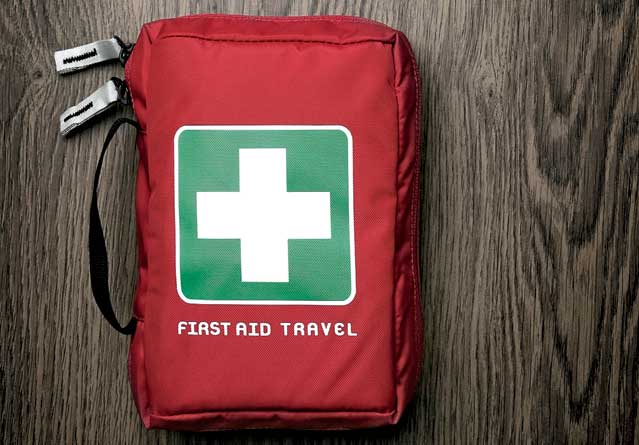You can buy a preassembled medical kit from your favorite outdoor retailer, but you’ll usually want to add something to it, and inevitably the supplies will dwindle, forcing you to replace them.
The smarter option: build your own, making sure you understand the uses for each item before you add it to your kit. A do-it-yourself approach allows you to easily adjust what you pack based on the location, the number of participants, the duration of the trip, and how much weight you wish to carry.
Keep your stuff safe from the elements (particularly moisture) by packing it in ziplock bags, and make sure all members of the expedition know where the medical supplies are stored and how each item should be used before departure.
Finally, try to choose multipurpose supplies, like medical-grade adhesive tape, which can both secure a bandage and, in a pinch, close a wound. The more versatile your tools, the fewer you need to bring.
Two-Person Weekend Medical Kit Checklist:
General equipment
• EMT shears
• Tweezers
• Duct tape
• Safety pins (for fashioning a sling)
• Needle and thread for stitching
• Headlamp
• A Copy of Medicine for the Outdoors—surprisingly effective at reassuring people
Medication
• Ibuprofen (ten) for pain, inflammation, and fever
• Antihistamine pills (two) forallergic reactions
CPR and bleeding
• Trauma pad
• Nitrile gloves
• Antimicrobial hand wipe
Wound care
• 20cc irrigation syringe for cleaning wounds
• Povidone-iodine (one ounce) for creating disinfectant solution
• Wound-closure strips (five)
• Tincture of benzoin
• Antiseptic ointment
• Three-inch-square gauze pads (four) for cleaning and covering wounds
• Adhesive strips (five) for covering wounds
Burn and blister care
• GlacierGel blister pad
• Moleskin (ten precut pieces)
Fracture and sprain care
• Elastic bandage to reduce swelling and provide support
View a complete list of backcountry-first-aid courses.


